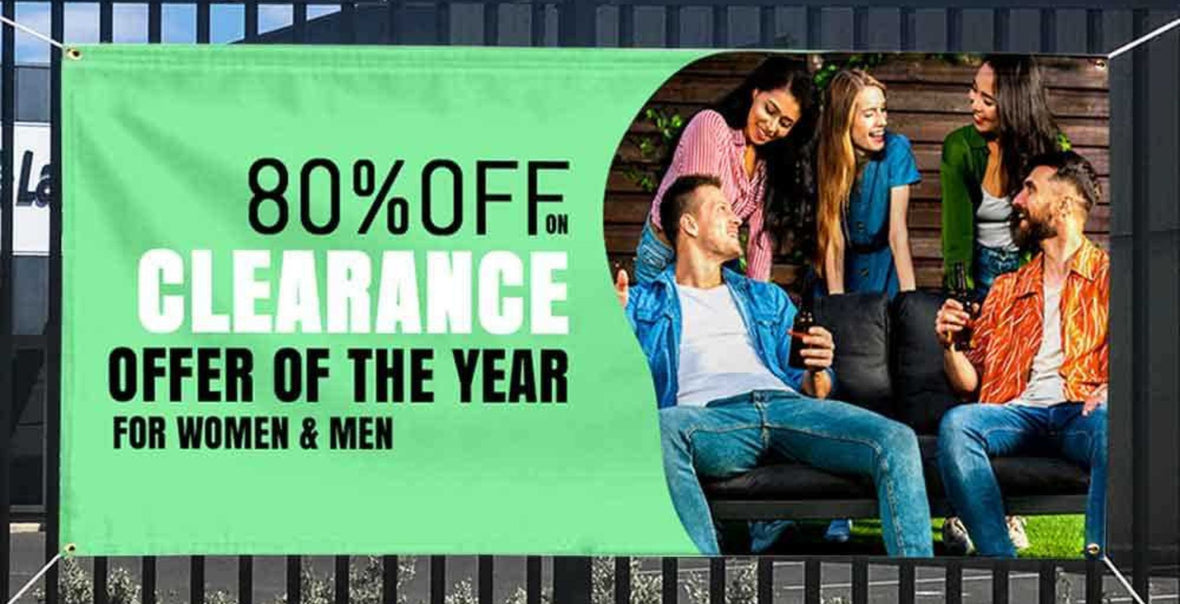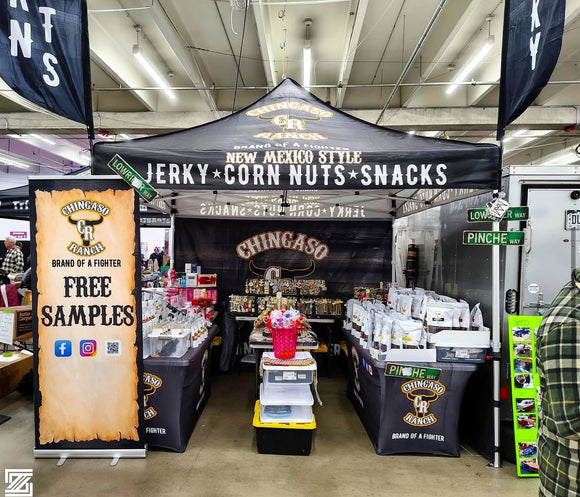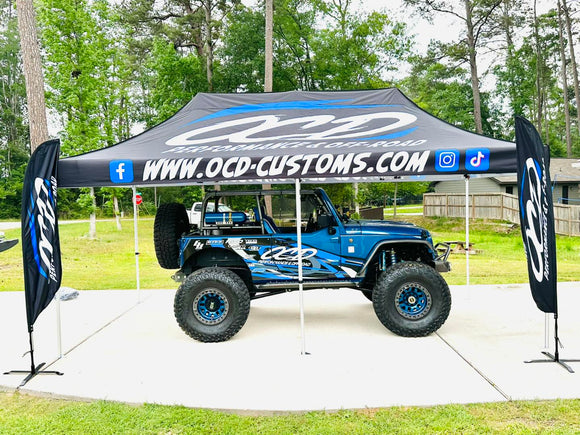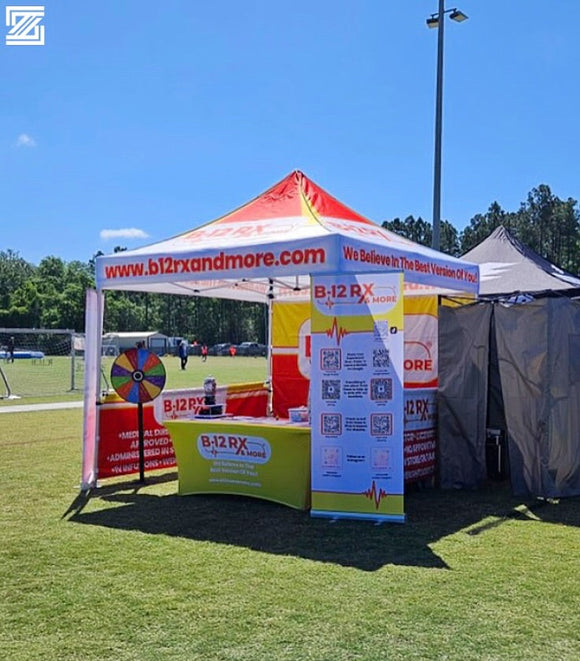
Increase Your Brand Visibility with Custom Advertising Banners
In today's competitive market, catching the attention of potential customers is more crucial than ever. With the rise of digital marketing, it's easy to overlook the power of traditional advertising methods, but outdoor advertising banners remain a highly effective way to promote your business. In this blog, we'll explore how you can transform your business with eye-catching advertising banners, with a focus on the expertise of Zulu Marketing & Printing.
Introduction
Advertising banners are a versatile tool for businesses to communicate their message effectively. Whether you're promoting a sale, a new product, or simply increasing brand awareness, a well-designed banner can make a significant impact. Zulu Marketing & Printing specializes in creating high-quality advertising banners and signs that help businesses stand out in crowded marketplaces.
Designing Effective Advertising Banners
Designing effective advertising banners is crucial for grabbing the attention of your target audience and conveying your message clearly and compellingly. Whether you're promoting a sale, an event, or your brand as a whole, a well-designed banner can make a significant impact. Here are some key tips for designing advertising banners that stand out:
- Understand Your Audience: Before you start designing your banner, take the time to understand your target audience. What are their interests, preferences, and pain points? Tailoring your message and design to resonate with your audience will increase the effectiveness of your banner.
- Keep It Simple: In the world of outdoor advertising, simplicity is key. Your banner should communicate your message quickly and clearly, even to people passing by at a glance. Avoid cluttering your design with too much text or imagery. Stick to one primary message and use concise language.
- Use Eye-Catching Graphics: Visual elements such as images, icons, and graphics can grab attention and make your banner more memorable. Choose high-quality images that are relevant to your message and complement your brand. Avoid using generic stock photos, as they can make your banner appear less authentic.
- Focus on Readability: Make sure your banner is easy to read from a distance. Use large, bold fonts that stand out against the background. Stick to a limited color palette to ensure contrast and legibility. Avoid decorative fonts or overly stylized text that may be difficult to read quickly.
- Include a Strong Call to Action: Every effective advertising banner should include a clear call to action that prompts viewers to take the next step. Whether it's visiting your website, making a purchase, or attending an event, clearly communicate what you want your audience to do.
- Consider Placement and Size: The placement and size of your banner are critical factors in its effectiveness. Choose a location with high foot traffic where your target audience is likely to see it. Consider the distance from which people will be viewing your banner and adjust the size accordingly to ensure maximum visibility.
- Test and Iterate: Once you've designed your banner, don't be afraid to test it out in different environments and gather feedback from your audience. Pay attention to how people respond to your banner and be willing to make adjustments as needed to improve its effectiveness.
Types of Advertising Banners and Their Uses
Advertising banners come in various types, each serving different purposes and offering unique advantages. Understanding the different types of banners and their uses can help you choose the right option to effectively promote your business or event. Here are some common types of advertising banners:
- Vinyl Banners:
- Uses: Vinyl banners are versatile and suitable for both indoor and outdoor use. They are commonly used for promoting events, sales, grand openings, and trade shows. Vinyl banners are durable and weather-resistant, making them ideal for outdoor advertising.
- Mesh Banners:
- Uses: Mesh banners are designed with small holes that allow wind to pass through, making them ideal for outdoor use in windy conditions. They are often used for large outdoor events, construction sites, and building wraps. Mesh banners offer excellent visibility while minimizing the risk of damage from wind.
- Fabric Banners:
- Uses: Fabric banners are lightweight, portable, and offer a high-quality look and feel. They are commonly used for indoor events, conferences, trade shows, and retail displays. Fabric banners can be easily folded or rolled up for storage and transportation, making them a convenient option for businesses on the go.
- Retractable Banners (Roll-Up Banners):
- Uses: Retractable banners, also known as roll up banner, are self-contained units with a retractable mechanism that allows the banner to be easily set up and taken down. They are popular for trade shows, conferences, presentations, and retail displays. Retractable banners are compact, portable, and offer a professional appearance.
- Double-Sided Banners:
- Uses: Double-sided banners have graphics printed on both sides, maximizing visibility from all angles. They are often used in high-traffic areas where people will be passing by from multiple directions, such as sidewalks, streets, and trade show booths. Double-sided banners are an excellent way to maximize exposure and reach a larger audience.
- Pole Banners:
- Uses: Pole banners are designed to be mounted on street poles, light poles, or other vertical structures. They are commonly used for promoting events, festivals, downtown districts, and seasonal promotions. Pole banners can effectively attract attention from motorists and pedestrians, making them a popular choice for outdoor advertising.
- Pop-Up Banners (Pop-Up Displays):
- Uses: Pop Up Banners, also known as pop-up displays or tension fabric displays, are lightweight, portable, and easy to set up. They are often used for trade shows, conventions, presentations, and retail environments. Pop-up banners feature a collapsible frame that allows them to be quickly assembled and disassembled, making them a convenient option for businesses on the move.
- Flag Banners:
- Uses: Flag banners, also known as feather flags or teardrop flags, are tall, attention-grabbing banners that flutter in the wind. They are commonly used for outdoor events, car dealerships, storefronts, and festivals. Flag banners come in various shapes and sizes and can be customized with vibrant graphics and messages to attract attention from afar.
Custom vs. Pre-Designed Banners
When it comes to creating advertising banners, businesses often face the decision between custom and pre-designed options. Both types of banners have their advantages and disadvantages, and the right choice depends on your specific needs and budget. Here's a comparison of custom vs. pre-designed banners to help you make an informed decision:
Custom Banners:
Advantages:
- Tailored to Your Brand: Custom banners allow you to tailor the design to fit your brand identity perfectly. You can incorporate your brand colors, fonts, and imagery to create a cohesive look that reinforces your brand message.
- Unique and Eye-Catching: Since custom banners are designed specifically for your business, they are more likely to stand out and grab attention. You can work with a designer to create a unique and eye-catching design that sets you apart from competitors.
- Flexible Design Options: With custom banners, you have more flexibility in terms of design options. You can choose the size, shape, material, and finishing options that best suit your needs and budget.
Disadvantages:
- Higher Cost: Custom banners are typically more expensive than pre-designed options, as they require the services of a graphic designer. The cost can vary depending on the complexity of the design and the materials used.
- Longer Lead Time: Since custom banners are made to order, they often have a longer lead time than pre-designed banners. If you need a banner quickly, a custom option may not be the best choice.
Pre-Designed Banners:
Advantages:
- Cost-Effective: Pre-designed banners are generally more cost-effective than custom options, as they are mass-produced and do not require the services of a graphic designer. This makes them a budget-friendly choice for businesses with limited resources.
- Quick Turnaround: Since pre-designed banners are already created and ready to go, they can be produced and delivered quickly. If you need a banner on short notice, a pre-designed option may be the best choice.
- Wide Variety of Options: Pre-designed banners come in a wide variety of styles, sizes, and themes. You can choose from a range of pre-made designs to find one that suits your needs and preferences.
Disadvantages:
- Lack of Customization: The main drawback of pre-designed banners is that they lack customization options. While you can choose from a variety of pre-made designs, you may not be able to tailor the design to fit your brand identity perfectly.
- Less Unique: Since pre-designed banners are mass-produced, there is a risk that your banner may look similar to others in the market. This can make it harder to stand out and grab attention.
In conclusion, the choice between custom and pre-designed banners depends on your specific needs, budget, and timeline. If you're looking for a unique, eye-catching design that perfectly reflects your brand, a custom banner may be the best choice. However, if you're working with a limited budget or need a banner quickly, a pre-designed option may be more suitable.
Materials and Printing Techniques
Choosing the right materials and printing techniques is crucial for creating durable, high-quality advertising banners that effectively promote your message and withstand the elements. Here's a guide to the materials and printing techniques commonly used for advertising banners:
- Vinyl:
- Material: Vinyl is one of the most popular materials for advertising banners due to its durability, weather resistance, and affordability. It comes in various weights and finishes, including matte, gloss, and mesh.
- Printing Technique: Vinyl banners are typically printed using digital printing or screen printing techniques. Digital printing offers vibrant colors and high-resolution graphics, while screen printing is more cost-effective for large quantities.
- Fabric:
- Material: Fabric banners are lightweight, portable, and offer a high-quality look and feel. Common fabric options include polyester, canvas, and satin.
- Printing Technique: Fabric banners are usually printed using dye-sublimation printing or direct-to-fabric printing techniques. Dye-sublimation printing produces vibrant, long-lasting colors, while direct-to-fabric printing offers excellent detail and clarity.
- Mesh:
- Material: Mesh banners are made from vinyl with small holes that allow wind to pass through, making them ideal for outdoor use in windy conditions. They offer excellent visibility and durability.
- Printing Technique: Mesh banners are typically printed using digital printing techniques, which allow for vibrant colors and high-resolution graphics. The mesh material may affect print quality slightly compared to solid vinyl banners.
- Paper:
- Material: Paper banners are lightweight, affordable, and suitable for indoor use or short-term outdoor use in dry conditions. They are not as durable as vinyl or fabric banners and may tear or fade more quickly.
- Printing Technique: Paper banners are usually printed using digital printing techniques. While digital printing offers vibrant colors and sharp graphics, paper banners may not withstand outdoor conditions as well as other materials.
- Eco-Friendly Options:
- Material: For businesses seeking more sustainable options, eco-friendly banner materials such as recycled vinyl or biodegradable fabrics are available. These materials offer similar durability and printing quality to traditional options while reducing environmental impact.
- Printing Technique: Eco-friendly banner materials can be printed using the same digital printing or dye-sublimation techniques as traditional materials.
- Finishing Options:
- Material: In addition to choosing the right material, selecting the appropriate finishing options can enhance the durability and visual appeal of your banner. Options include hemming, grommets, pole pockets, and reinforced corners.
- Printing Technique: Finishing options are applied after printing and may vary depending on the material and intended use of the banner. They help reinforce edges, provide additional support for hanging or mounting, and improve overall longevity.
Maximizing the Impact of Your Advertising Banners
Advertising banners are a powerful tool for promoting your business and attracting customers. To maximize their impact, it's important to consider factors such as design, placement, and visibility. Here are some tips for getting the most out of your advertising banners:
- Design for Impact: Create a visually appealing design that grabs attention and communicates your message clearly. Use bold colors, high-quality images, and concise text to make your banner stand out. Consider the viewing distance and angle to ensure your message is easily readable from a distance.
- Choose the Right Location: Place your banner in a high-traffic area where your target audience is likely to see it. Consider factors such as foot traffic, vehicle traffic, and visibility from a distance. Ensure that your banner is placed at eye level for maximum impact.
- Consider Your Audience: Tailor your message and design to appeal to your target audience. Consider their interests, needs, and preferences when creating your banner. Use language and imagery that resonates with your audience to increase engagement.
- Keep It Simple: Avoid cluttering your banner with too much information. Keep your message clear and concise, focusing on the most important information. Use a simple, easy-to-read font and avoid using too many colors or fonts.
- Use Bold Call-to-Actions: Include a strong call-to-action (CTA) that prompts viewers to take action. Whether it's visiting your website, making a purchase, or contacting you for more information, make sure your CTA is clear and compelling.
- Maintain Your Banner: Ensure that your banner is well-maintained and in good condition. Check for any damage, fading, or wear and tear regularly, and replace or repair it as needed. A well-maintained banner will continue to make a positive impression on viewers.
- Measure Your Results: Track the effectiveness of your advertising banners by monitoring metrics such as foot traffic, website visits, and sales. Use this data to evaluate the success of your campaign and make any necessary adjustments for future campaigns.
Conclusion
In conclusion, advertising banners remain a powerful tool for businesses looking to attract customers and increase brand visibility. By partnering with Zulu Marketing & Printing, you can access expert design services, high-quality materials, and innovative printing techniques to create eye-catching banners that drive results. Whether you're promoting a special event, a new product, or your brand as a whole, investing in outdoor advertising banners is a smart move for any business.
With Zulu Marketing & Printing's expertise and your creative vision, you can create advertising banners that stand out from the crowd and help take your business to the next level. So why wait? Start transforming your business with eye-catching advertising banners today!


